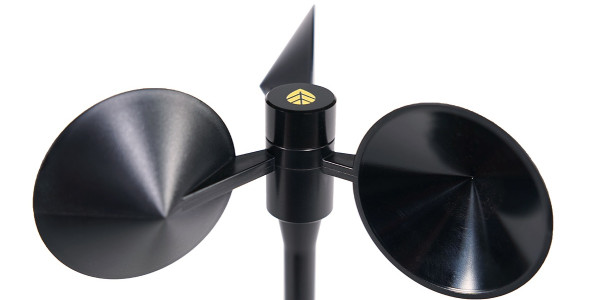WindSensor P2546-OPR Anemometer: Wiring and Installation Information
The purpose of this document is to explain the differences between the two versions of the WindSensor P2546-OPR anemometer as well as address the different wiring schemes and power requirements. Boom options and a drawing with physical dimensions of the sensor can be found at the end of the document.
There are currently two available models of the P2546-OPR anemometer, the P2546A-OPR and the P2546C-OPR. The P2546A-OPR uses a mercury-wetted reed switch to produce pulses as the anemometer head spins. This version of the sensor works as a digital anemometer and requires either a 5v or 12v excitation voltage (depending on the wiring).
The P2546C-OPR uses a coil to produce a low level AC sine wave. This version of the sensor has a frequency-based output similar to #40C and NRG Class 1 anemometers and does not require excitation voltage.
From the standpoint of measuring the wind speed, the performance of the two anemometer versions is identical.
Related Products/Accessories
Download Calibration Reports
Our Calibration Report Retriever Tool is a comprehensive database of reports for the following products:
NRG Anemometers
110S Temperature Sensor
200M Wind Vane
200P Wind Vane
BP20 Barometric Pressure Sensor
BP60 + BP60C Barometric Pressure Sensor
HybridMC Anemometer + Vane
HybridXT Anemometer + Vane
PVT1 PV Temperature Sensor
T60 + T60C Temperature Sensor
R1 Pyranometer
R2 Pyranometer
RH5X Relative Humidity Sensor
Thies First Class Advanced Anemometer
WindSensor P2546-OPR Anemometer
Tech Support
Whether you are troubleshooting in the field or learning how to install a product, we are here for you.




